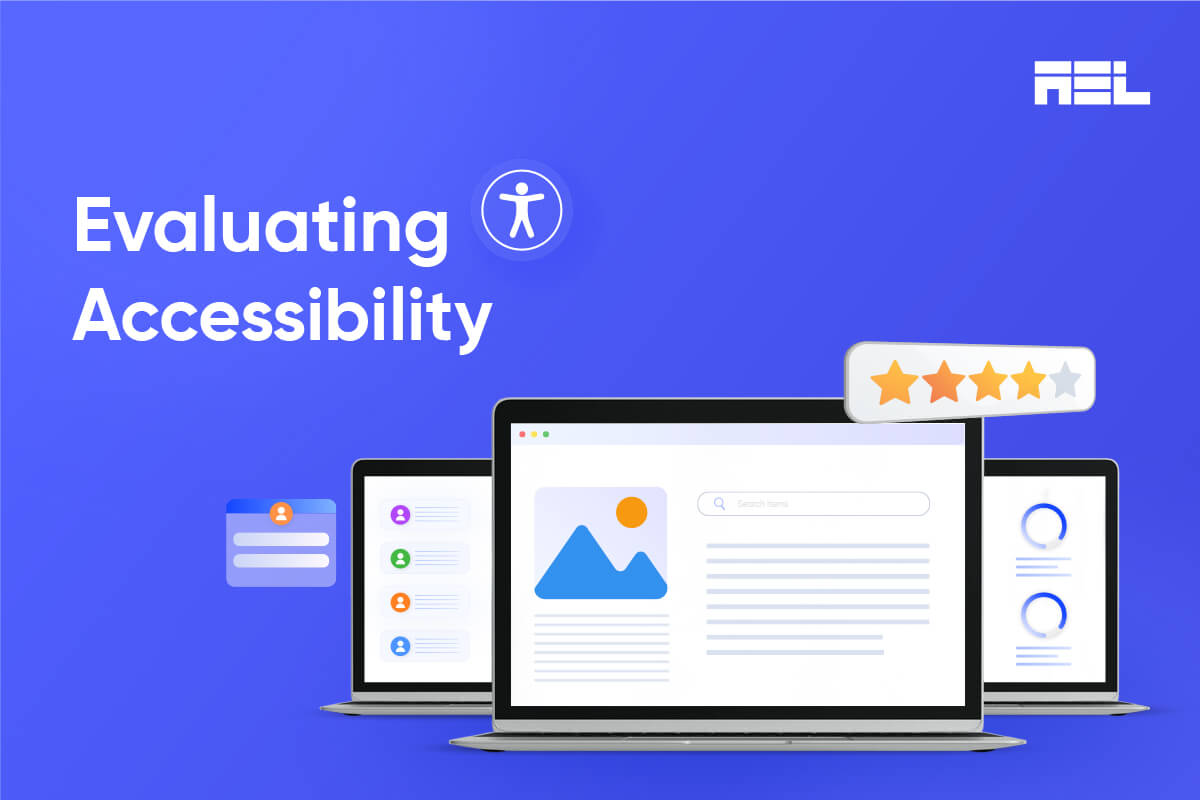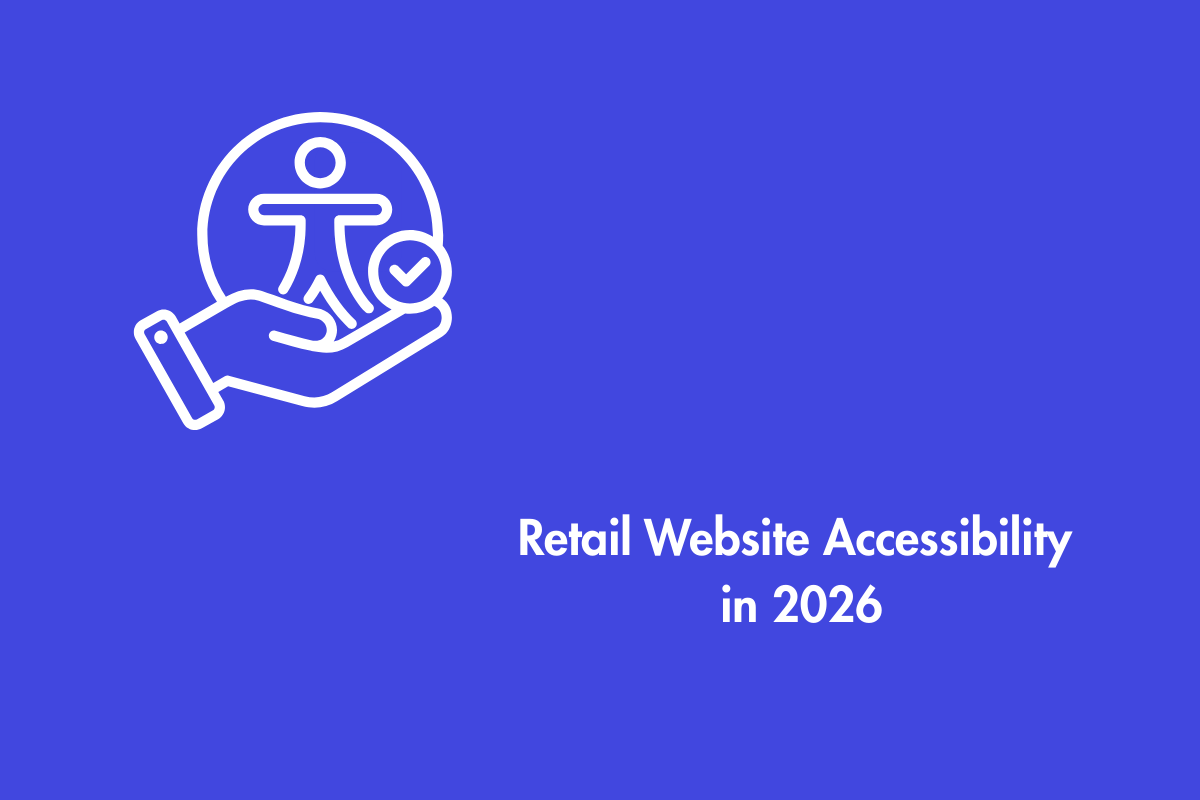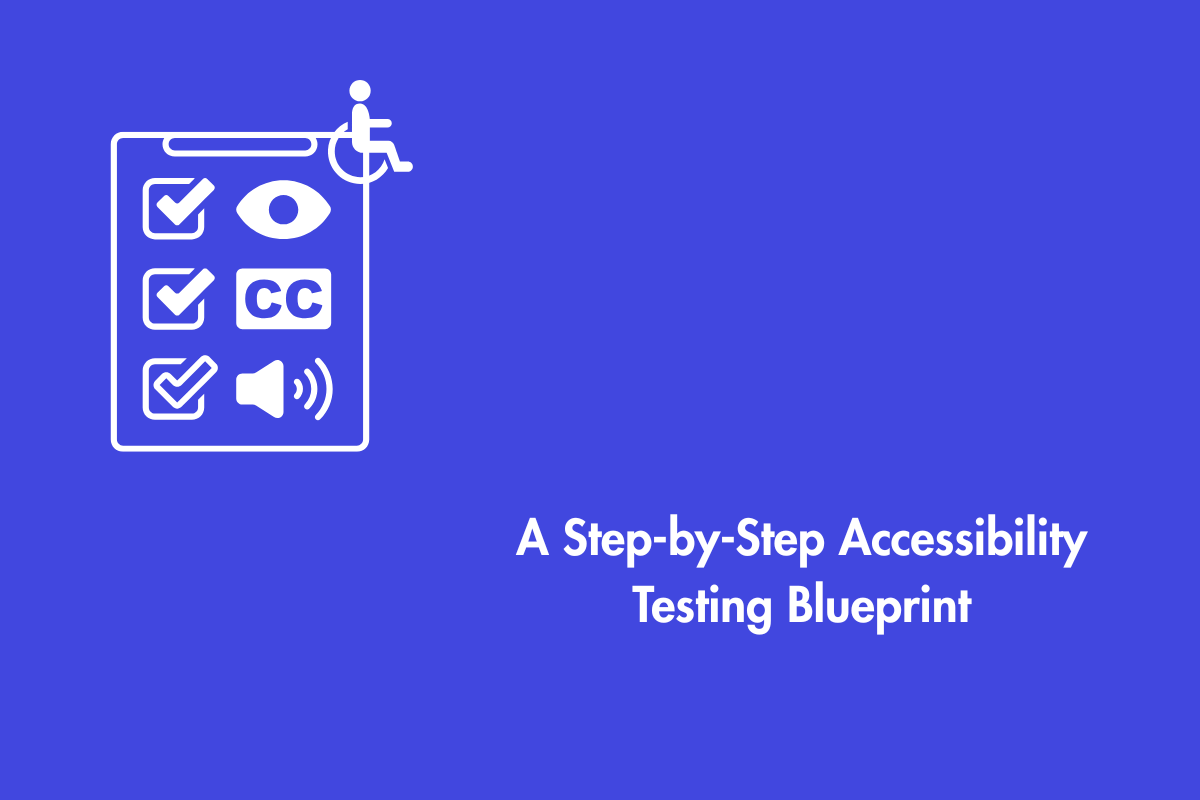When working on a website or web app, it’s crucial to check its accessibility from the beginning and consistently throughout development to catch issues when they’re easier to fix. While evaluation tools can help, they can’t tell you on their own if a site meets accessibility standards. You need knowledgeable human evaluation to determine that.
In today’s digital world, everyone must have equal access to information and services. Website accessibility is the linchpin here, allowing inclusive and barrier-free exploration. But to truly enhance digital experiences, your website must meet these accessibility standards. How can you evaluate it, and what are some key best practices? Let’s explore it step-by-step.
Accessibility is about making it easy for people with cognitive or physical impairments to use products, apps, or services. This includes issues like vision or hearing loss, mobility constraints, and memory changes. Evaluating accessibility relies on standard guidelines like Section 508 and WCAG 2.0. It might involve end-users, but not always. The goal is to spot issues and find the best solutions to make any product more accessible.
Table of Contents
Navigating Accessibility Audits with WCAG-EM
Ensuring a website’s accessibility to people with disabilities often involves conducting an independent audit aligned with the Web Content Accessibility Guidelines (WCAG). These guidelines were established by the World Wide Web Consortium (W3C), which serves as the foremost standard for digital accessibility. Adhering to WCAG signifies a commitment to fostering a more inclusive internet.
However, claiming conformity with WCAG demands independent evaluation. The W3C doesn’t validate the accuracy of conformance claims. Consequently, any website can assert compliance without actually meeting WCAG’s checkpoints. Independent auditors may employ various methods to assess content, posing a challenge in verifying genuine adherence.
To address this issue, the W3C introduced the Web Accessibility Conformance Evaluation Methodology (WCAG-EM). This methodology delineates a systematic approach to evaluating websites against WCAG, offering a valuable resource for those embarking on an accessibility initiative.
Maintaining a consistent process for accessibility audits is crucial. Yet, modern websites’ diverse features, layouts, structures, and styles complicate determining the audit’s scope.
WCAG-EM simplifies the evaluation into a five-step process:
- Define the evaluation scope.
- Explore the target website.
- Select a representative sample.
- Audit the selected sample.
- Report the findings.
Each step is comprehensive, providing recommendations, best practices, and guidance for evaluators.
By leveraging WCAG-EM recommendations, evaluators can ensure precise audits, offering accurate results and clear remediation guidance to their clients. This methodology serves as a crucial tool for navigating the complexities of digital accessibility audits.
Types of Accessibility Evaluation:
When it comes to assessing accessibility, there are four primary methods at your disposal, each capable of being used independently or in conjunction with others:
Automated Evaluation:
There’s a wide array of tools available, both free and paid, that streamline the evaluation process. Some tools specialize in specific aspects of digital accessibility, such as checking color contrast (like A11Y color contrast validators).
Others, like WAVE, conduct comprehensive checks and pinpoint major structural issues that might be elusive at intricate interfaces. W3 offers an extensive list of web accessibility evaluation tools catering to various levels and needs.
However, while these tools serve as an excellent starting point for evaluation, they don’t cover all accessibility issues. They should complement, rather than replace, a thorough manual audit.
Manual Evaluation:
This involves a meticulous manual inspection of the interface against a set of standards, accompanied by recommendations for enhancement and firmly rooted in WCAG’s principles, focusing on creating interfaces that are perceivable, operable, understandable, and robust.
Each category entails specific tasks for review. For Example:
- Perceivable: Ensuring users can recognize and utilize the interface using the senses that are available to them.
- Operable: Ensuring users can find and interact with content using tools like keyboards or voice commands.
- Understandable: Ensuring users can comprehend the content and functionalities seamlessly.
- Robust: Ensuring content can be reliably interpreted by diverse user agents, including outdated and modern browsers and assistive technologies.
Usability Testing:
While automated tools and expert reviews offer valuable insights, observing individuals with disabilities navigate your interface and collecting their feedback is invaluable. This method resembles a standard usability test: users perform common tasks while providing feedback on both strengths and areas for improvement.
Conducting these sessions in person grants a comprehensive understanding of the broader context and any off-screen tools or interactions.
Assistive Technology Testing:
Given that many users with disabilities rely on assistive technology understanding this process and the challenges users might encounter is crucial. This testing can be integrated into the manual evaluation, the usability testing processes, or even both.
Each method offers unique perspectives on accessibility, and a combination of these approaches often yields the most comprehensive evaluation of your interface’s accessibility.
Accessibility Evaluation Tools and Resources:
The benchmark for assessing accessibility commonly aligns with the Web Content Accessibility Guidelines, a globally acknowledged set of recommendations for enhancing web accessibility. To meet standards, digital interfaces typically adhere to the WCAG 2.0 AA level, while some necessitate reaching the AAA level.
These guidelines center on the core principles of being perceivable, operable, understandable, and robust. They encompass interface content, design, and underlying code, necessitating collaboration among all project team members for a comprehensive review.
This evaluation aims to gauge the interface’s usability for individuals with various impairments, encompassing vision, hearing, mobility, and cognitive aspects.
While it encompasses common disability types, there might be instances where focusing on the specific challenges of particular user groups is pertinent.
Tools for Analysis:
Website analysis tools serve a pivotal role in evaluating website performance and accessibility. They offer a range of benefits, including:
- Issue Identification: These tools spot errors like broken links and HTML/CSS validation issues, aiding in prompt rectification for a smoother user experience.
- Performance Enhancement: Insights into load times, server responses, and resource optimization enable owners to boost site speed and responsiveness.
- User Experience: By analyzing traffic, click-through, and bounce rates, these tools reveal user preferences, pain points, and areas for enhancement.
- Accessibility Assurance: Some web accessibility checker tools include checks for accessibility barriers and ensuring adherence to standards like the WCAG principle for inclusivity.
- SEO Monitoring: By providing SEO insights, these tools help monitor keyword performance and improve visibility in search engine results.
- Web Accessibility Evaluation Tools: A list encompassing over 100 tools allows filtering based on specific interests, aiding in selecting the most relevant assessment tools.
Continuous Monitoring and Improvement:
While certain checks aim for swift assessment, they might not comprehensively cover all accessibility issues. A more robust evaluation is often necessary to ensure comprehensive accessibility.
Specific aspects covered include:
- page titles,
- alt text for images,
- text attributes,
- color contrast,
- keyboard access,
- form functionalities,
- multimedia alternatives, and
- structural checks.
These evaluations offer initial guidance and links to further resources for more comprehensive assessments.
Building a More Inclusive Digital World:
When websites are designed, ideally, accessibility should be a core principle. But often, the reality doesn’t align, leading to websites lacking crucial accessibility features. This inadvertently creates obstacles for individuals with diverse abilities.
Yet, if you’re facing this predicament, there’s always room to enhance your website’s accessibility, regardless of its initial design. Revisiting and improving accessibility features is an ongoing opportunity.
Implementing these changes might require external expertise, but it’s a valuable investment. Not only does it align with accessibility standards and legal requirements, but it also champions inclusivity.
Retrofitting accessibility features ensures your website offers an inclusive experience, making digital content accessible to everyone, irrespective of their abilities. Interestingly, these improvements tend to benefit all users, fostering a more user-friendly and navigable website experience.
Conclusion:
At AEL Data, we recognize the significance of web accessibility and the synergy between human knowledge and technological advancements. That’s why we provide a range of accessibility and web evaluation solutions, empowering businesses to attain web accessibility. Contact us to discover how you can assess your website’s accessibility, ensuring a robust digital presence that includes everyone.



